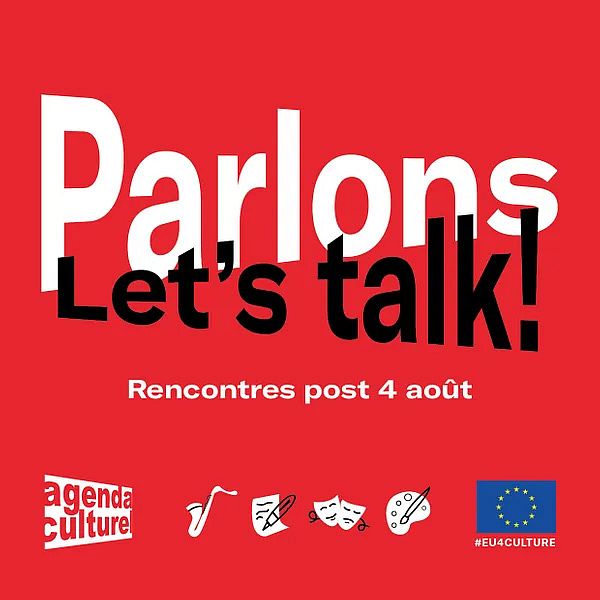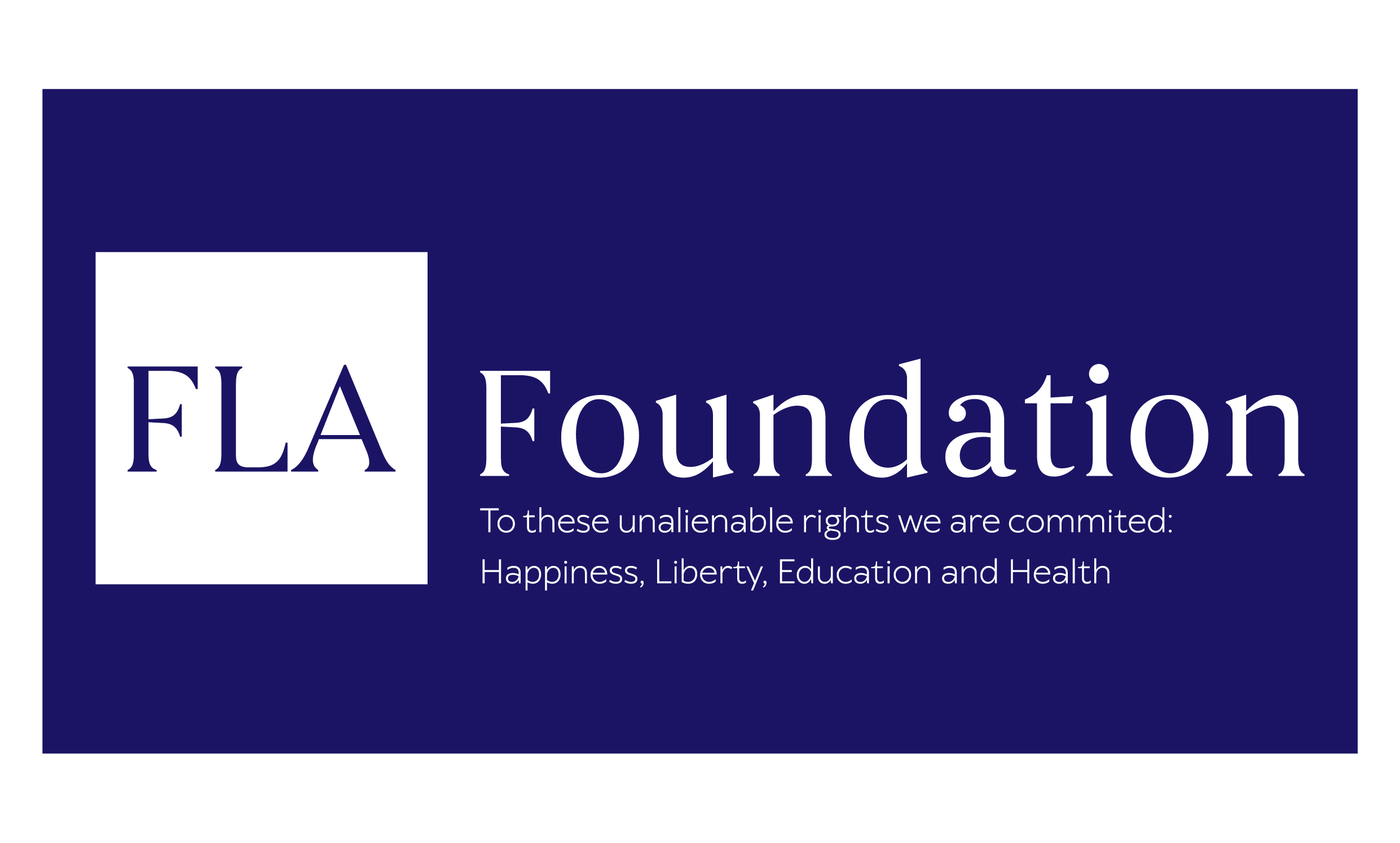'Rencontres post 4 août' #4 : L'Art questionne l'explosion de Beyrouth
Parlons - Let's Talk11/11/2020 à 11:00
RENCONTRE # 4 : L'Art questionne l'explosion de Beyrouth
Dans les conditions extrêmes que nous vivons les uns et les autres, dans cette vie bouleversée que nous affrontons, nous recherchons à partager nos ressentis et à écouter les avis des autres.
Dans cette optique et pour que le public retrouve le chemin des galeries, théâtres, musées et autres lieux de culture et que les artistes échangent avec le public, l’Agenda Culturel, organise les « Rencontres post 4 août » sur différents secteurs de la vie culturelle. Des artistes partageront leurs sentiments et l’impact de cette situation inédite sur leur destin en tant qu’artiste.
Les artistes participants : Alain Vassoyan, Ara Azad, Ghada Zoughby et Leila Jabre Jureidini
Date : Mercredi 11 novembre à 11h00, Galerie Janine Rubeiz
Langues : Arabe et français
Masque sanitaire requis - distanciation sociale assurée
Places limitées. Inscription obligatoire sur web@agendaculturel.com
La rencontre sera retransmise en direct sur la page Facebook de l'Agenda Culturel
L'Union Européenne promeut les arts, la culture et la créativité.
Les « Rencontres post 4 août » sont rendues possible grâce au soutien financier de l'Union Européenne.

Born in 1966, Alain Vassoyan is a Lebanese-Canadian artist based in Beirut. He studied Sculpture at the Ecole de Ceramique Bonsecours in Montreal and Art History at Montreal University. He's currently teaching sculpting at the Academie Libanaise des Beaux Arts (ALBA) and the Saint Joseph University of Beirut. Vassoyan's work has been showcased in collective and individual exhibitions around the world. He held solo exhibitions at "Salle du Gesu" in Montreal, Canada (1995) and at Galerie Janine Rubeiz in Beirut, Lebanon (2009, 2011, and 2017). His artworks were part of several collective exhibitions: "Constantin Brancusi Cultural Center" in Montreal, Canada (1995), "Goethe Institute" in Beirut, Lebanon (2005); "Sursock Museum" in Beirut, Lebanon (2006 and 2018); "Beirut Art Fair", Lebanon (2012, 2013, 2014, and 2015); "Art 14" in London, UK (2014); "Abu Dhabi Art" in the UAE (2014); and "Break all Frames" at Beit Beirut, Lebanon (2014). In 2005, he participated as a contestant in the international contest of "Hyogo Prefector Museum" in Kobe, Japan. Vassoyan is renowned for his three-dimensional sculptural installations, and his work is permanently exhibited with Galerie Janine Rubeiz.
About his work
The fascination of Alain Vassoyan with conflict doesn't set him off on a path of wonder unless this wonder enters into conflict with his imagination and humour; a terminal station for the grammar of tragedy. In his sculptures, the viewer is initially faced with the innocence of toys and childhood, only to open up later as disturbed and disfigured characters; victims of a transformation both psychic and physical. The toys are storytellers of a world in collapse or already collapsed, flimsy and yet curiously alive. A number of subtle themes from the Lebanese Civil War rise out of playfulness and grow into their tragic magnitude, with a perverse comic allure. With the exposure to the disfigured bodies and weapons, the viewer is no longer certain whether the morphological dichotomy is between the figurative and the real, or between the real and ourselves. The allegory that emerges between humour and catastrophe does not stop at critique but involves the audience in absolute derision of the dramas of war and the human condition in general. He points towards an intoxicating vision: It is a world exactly like ours. The narrative elements in his imaginary world present themselves as irredeemable; that is the source of their radiance.

Ara Azad was born in Beirut in 1962 and is based in Boston since 1982. He holds degrees from The School of the Museum of Fine Arts, and the Institute for Global Leadership at Tufts University. Azad is involved in art education in Germany, Bahrain and Lebanon, and a lecturer in fine art, he is the former (1996-98) representative of the School of the Museum of Fine Arts, Boston, Massachusetts. His work spans across painting, sculpture, site-specific installations and performance. With Galerie Janine Rubeiz, he held the solo exhibition “Aspérité(s)” (2010), and his work has been showcased in Art Dubai (2010). His work is permanently exhibited at Galerie Janine Rubeiz, Beirut.
About his work
With a work rather difficult to classify, Ara Azad is a multicultural traveler and practitioner, with a body of interconnected practices that reflect not only his background but also the itinerant nature of his project: In 1995, he embarked on the still ongoing project, Postal Paintings, triggered by his curiosity about the limits of trust and human experience. The artist painted canvas that were mailed unwrapped and exposed to atmospheric conditions, so that they would bear traces of their journey, creating a space of possibility for human trust and communication. Expanding the theoretical limits of painting, sculpture, drawing and installation, he collapsed them into each other with topographical precision but yet at a blurred margin, at an interstice where transformation is ceaseless. His mailed paintings were included in the Liverpool Biennial and as a performer, he remains very concerned with the articulation of an artistic practice where social issues and aesthetics convene on the public domain, where as an art educator, Azad has attempted to convey the same message of synthesis and crossing borders that echoes throughout his work.

Born in Chmestar, Lebanon in 1980 - Ghada Zoughby pursued her education and showed an interest for arts since an early age. Even though, she faced many obstacles as she struggled to pursue her dreams of a higher education especially on fine arts since she had to challenge the patriarchal community where she was raised . she decided to move alone to the capital Beirut, at the age of 18, to enroll in art teachers college. In the year 2005 Ghada continued on to attain her fine arts degree from the Lebanese University. The teacher degree was the means to sustain her driven need to be a successful artist. Her first Solo show was the year 2016 titled “Regimes of the Personal”,at “Artspace Gallery” Beirut, where she represented 13 paintings, each one telling the story of a random person from the local community via their closets. Her show was a big success, and opened wide many chances to exhibit and participate in many collective shows in Lebanon and other countries (Jordan, Qatar, Egypt and France). Her goal is to leave her mark in the Lebanese art realm. Ghada has no political, religious or social affiliation she aspires to support humans in their advancement with her art and refuses to adhere to geographic borders drawn on maps by violent and illegitimate leaders. As a professional artist Ghada remained in Beirut and now works at Tahweeta El Ghadeer Public School in the suburbs of Beirut. As an art teacher for the past 19 years, Ghada works with inner-city kids and refugee students passing on her artistic skills to enlighten their lives and enrich their educational experience.
Artist Statement
"We are all involved as members of communities, governed by the contradictions of belongings , the antagonism of beliefs and the struggle for power…I stand in front of all this and ask myself: What Have I done ! Here I begin a quest to inner self, where the hidden is the most truthful, and speechlessness is strongest."

Born in 1963, Leila Jabre Jureidini is a Lebanese artist based in Beirut and who has studied in Paris where she attended the Atelier Jacques D’Anton et Met de Penninghen at the age of 18. She then went to the Ecole Supérieure des Arts Graphiques, followed by two years at Parsons School of Design, Paris campus and New York, for a degree in graphic design. Today Leila spends most of her time in her studio where she paints, sculpts and brings to life the things that move her. Her sculptures of women, captured in an often-transient position reminiscent of Cartier-Bresson’s ‘decisive moment’, glorify the feminine body in all its splendour. Her bronze cubic sculptures are abstract representations of moods and emotions, and the multi-media pieces a comic – or sad – showcase of our legacy to our children. The abundance of her work throughout the years culminated in a few high-brow shows, among which: "London's Contemporary Parallax Art Fair" in 2011, "Sursock Museum's 31st Salon d'Automne" in 2012 where she received special mention of the Jury, "Beirut Art Fair" in 2013 and 2015, "Bitassarof" at the Lebanese National Library in 2016 and the travelling collective exhibition of "Imago Mundi Benetton Collection" in 2017. Jureidini's work is permanently available at Galerie Janine Rubeiz where she partook in solo and collective exhibitions: "The Undoing" in 2014, "Collective exhibition" in 2015, "oeuvres recentes" in 2017, "Freedom Fighters" in 2019, and most recently, “Beirut 2020”.
About her work
At a time when sculpture evaporates into pure gesture and found object, few artists are able to conjure up enough life inside inert matter, rather than simply extract it haphazardly. Leila Jabre Jureidini's sculptures, at the expense of an infinite and breathless gravitational field, exhale with ambivalent verticality, in a broad range of expressions varying from neo-classicism to conceptualism. The smooth surfaces, apparently filled with substance, are sometimes concave and alternatively spiralling from solidity into flight and air. Bronze becomes completely malleable and elastic; slabs and cubes of sedimentation concrete appear playful and elegantly embedded with fragile symbols of modern culture - contradiction, commoditization, violence, consumption. Jureidini retrieves the same thread in her paintings and bi-dimensional mixed media works that while still sculptural in nature, remain humorous and open-sourced. The bronze sculptures retain a degree of indebtedness to the high modernist aesthetic, punctuated by an unexpected voluptuousness and freedom. More abstract forms of representation however, in her most recent work, make the viewer forget the gravity of the material and wander away into fantasy. Her latest work, themed ‘The Undoing’ or ‘what if not’, speculates what could have been if no nuclear attack, for example, had wiped Hiroshima. She ‘reverses the process’ by removing layers of paint from a series of nine rotating panels illustrating the what happened on one side and the what if it hadn’t on the other – in reverse order – reversing death to life; or what if I was born there, showing a veiled woman on the left-diagonal panes of a large-size lenticular (zigzag) canvas and the same woman in a bikini on the opposite panes...

